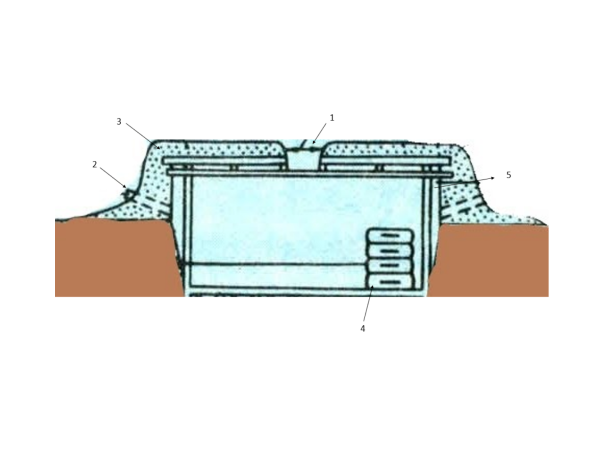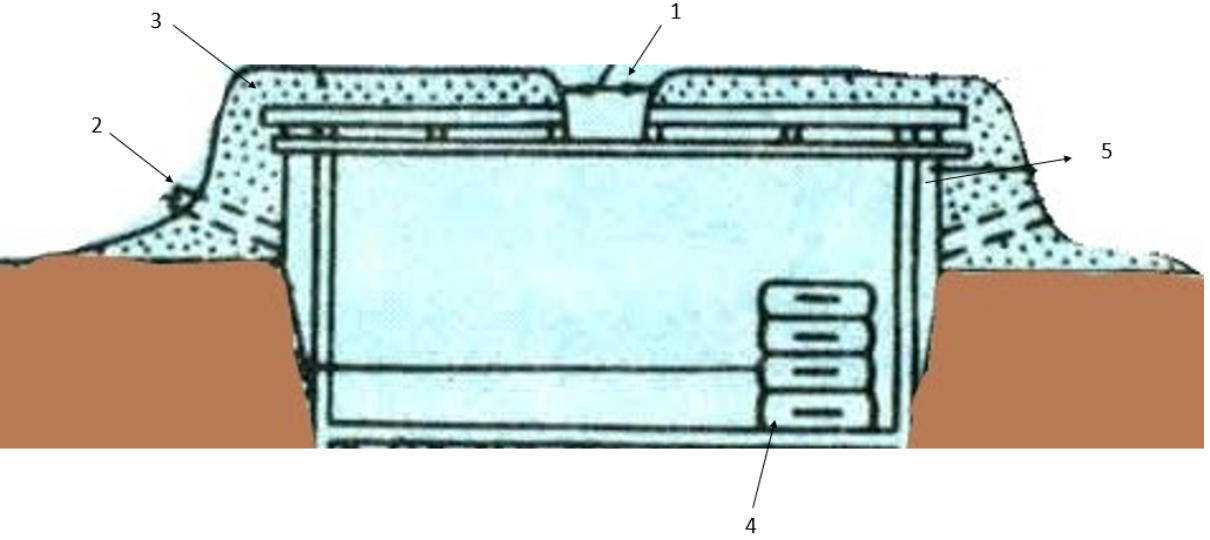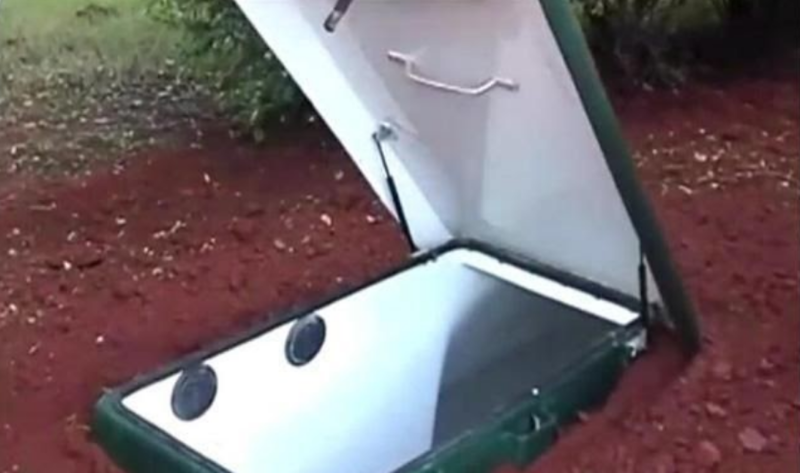Description
As the drawing shows, it is a semi-underground cellar used to store vegetables and fruit. Thanks to the difficulty of heat transfer in the underground, the cellar is able to have a constant temperature all year round, 0℃- 5℃. In addition, the tightness of the cellar ensures humidity. It is suitable for onions, garlic, zucchini, potatoes, cabbage, etc.
Étape 1 - Making a hole
First, we dig a big pit in the ground.
Étape 2 - Construction of the Cellar
And then we build a cellar using stones and cement. Remember to create two exhaust vents. Since in the cellar there are a lot of gases like CO2, CH4, etc. and it lacks O2. So before entering the cellar, we need to open the exhaust vents to have enough O2.
Étape 4 - Enterrer le cellier avec de la terre
Étape 5 - Ajout d'eau
Il faut mettre de l’eau dans le cellier. Quand il fait trop froid, de l’eau va se geler et produire la chaleur. En revanche, il va se volatiliser pour absorber la chaleur.
Notes et références
Avantages :
- Pouvoir éviter le soleil et avoir une température constante toute l’année.
- L’accumulation de CO2 et la manque de O2 permettent de ralentir le pourri des fruits et des légumes.
- De plus, il est assez facile à construire et il sera utilisé pour un long terme.
- Il convient à conserver un grand lot de légumes et de fruits.
- L’écart de hauteur entre l’entrée et le sol permet d’éviter l’entrée de l’eau quand il pleut souvent.
Inconvénients :
- Il va produire du gaz des marais, donc il faut faire attention avant d’entrer le cellier afin d’éviter d’explosion.
- Ne convient pas pour tous les aliments, tels que la viande, le poisson, les bananes, etc.
Draft



 Français
Français English
English Deutsch
Deutsch Español
Español Italiano
Italiano Português
Português